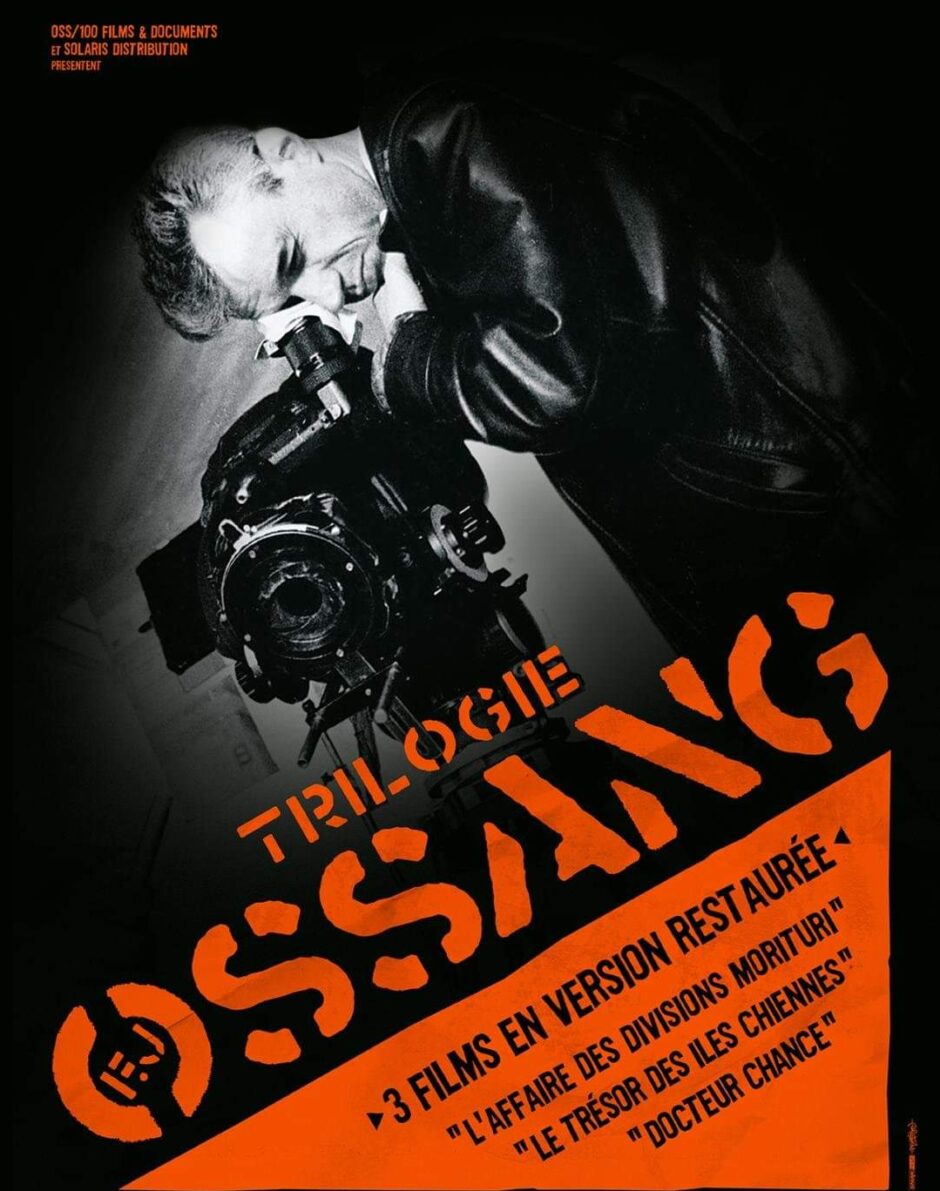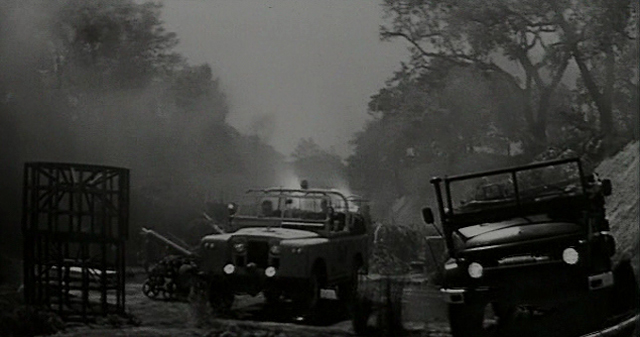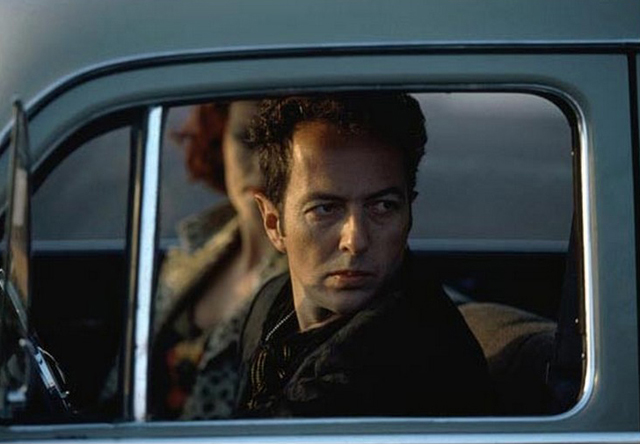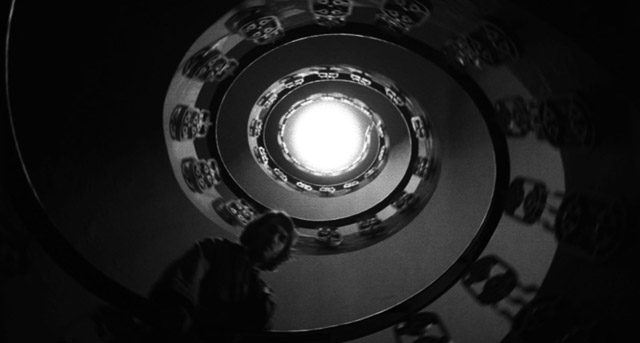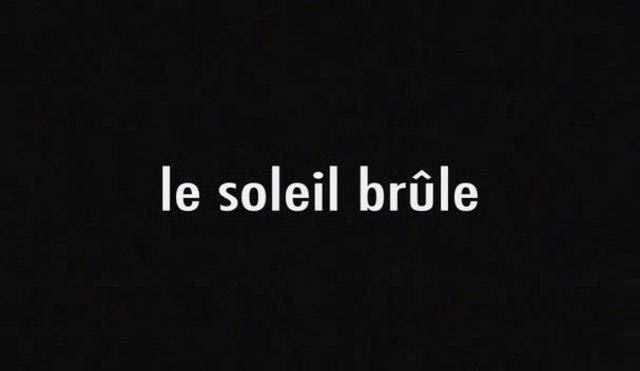article original
F.J. OSSANG: PUNK CINEMA AND THE SUBVERSION OF FILM NOIR
How does the subversion of noir works for a filmmaker like FJ Ossang? The tangible vortex of ambiguity and violence of the genre, that chiaroscuro and expressiveness of black and white does not only set a confined mood in which his story develops; the codes and resources (from the camera angles to the stylized dialogue) devoid from the off-balance setting of his mise in scene do not just represent tension and claustrophobia, they are expressive methods of a language of revolt, of the punk mentality, a back set for the redemption of the apocalypse, of the sci-fi adventure, of the industrial wasteland. Noir gets represented as a post traumatic experience.
by José Sarmiento Hinojosa
Et le film dans tour ça, virtuel comme le reste – près de s’effacer dans l’orage magnétique qui survient… pour en finir avec le jugement de Dieu, tu parles! C’est trop tard… Là où ça sent la merde, ça sent l’être!
F.J Ossang (1)
Into the eternal darkness, into fire and into ice.
Dante Alighieri –Divine Comedy
The saying goes “no man is an island” but FJ Ossang could be easily an archipelago on itself: Poet, musician, filmmaker, and actor; the expressive capacity of Ossang has transcended beyond the blurry lines of genres and disciplines, not digressing in each one of his attempts, but achieving a magnificent articulation that projects the identity of his art: a post-apocalyptic sci-fi punk noir universe, a classification that, paradoxically, defies any classification. Ossang’s subversion of the concept of film noir is as revolutionary as the poetic recitative cadence in the lyrics of Messageros Killers Boys (his band) and the punk prose/diary/manifesto style of his poetry. The synergy or interaction between music, poetry and cinema is undividable here. Everything belongs to one another, everything merges and dialogues: Part diary, part manifesto, a work of curiosity and rebellion.
To experience Ossang is to take part of a cinematic tour de force: from the “noise n’roll” industrial/new wave overtones of Terminal Toxique (the first M.K.B. LP) to the manifesto that is Mercure Insolent (his last poetry book), everything in his art exudes cinema, like oozing black matter coming from the insides of the earth. It could all well be a revision of the entrails of German expressionism, taunting and haunting the celluloid as concealed ghosts from the past, forcing the closing of the iris throughout several takes, being reinvented in a sci-fi nightmare that exposes the darkest obsessions of mankind.
To talk about Ossang is to venture in an ocean of references, of erudite expressiveness, of metaphoric machines, to become part of a revolution. From Throbbing Gristle, to Russian sci-fi, to Jules Dassin on an acid trip, Kyro’Corp, Bruce Satarenko, the Bitch Islands, the Dharma Guns… few auteurs have maintained such a consistency on their universe, in a flood of characters and places, of apocalyptic anxiety, of the end of the world… Ciel Éteint!
The sky blacks out in the movie theater.
ZONA INQUINATA: A POLLUTED UNIVERSE
It all started with literature, but it was music which was a first preface to his film career. Listening to M.K.B Fraction Provisoire’s Terminal Toxique (1980), one immediately gets transported into the post-industrial punk climate that would imbue all of his creation. Kyro’ Inc. opens to a psychobilly guitar and relentless strumming bassline, while European Death Winners is a prophecy in itself for all that was to come:
And now, this is Dada and Rock’n Roll Guerrilla.
This was the setup for Ossang’s first student film, La Dernière Énigme (1982), a political manifesto about state terrorism inspired by Gianfranco Sanguinetti’s On Terrorism and the State:
As for us, the subversives, who support the opposition of the workers and do not support the State, we will prove ourselves to be so, above all and on every occasion, by continually unmasking all the acts of terrorism perpetrated by the secret services of the State, to which we willingly leave the monopoly on terror, and by making the State’s infamy more infamous by publicizing it: the publicity that it merits (2).
This essay quickly became a primary headstone that Ossang would revisit constantly, a manifestation of a punk movement which also was a driving power for his first’s attempts on film: the apprehension of the tyrant concept, the revolt or escape against repressive powers, state terrorism, conspiracy theory, big brother, All-Seeing Eye: Ettore, Ponthans, Angstel, Stan van der Decken, are all rebellious characters, brought from noir cinema with a baggage of demons, imperfections, obsessions, violence and anxiety. From visiting a toxic wasteland to get ahold of a new energy power source, to be involved in a network of art forgery, science fiction, crime, the apocalypse, again, the end of the world, the revenge of the earth on its habitants.. An implosion and explosion of genres, colliding into a massive black hole, a universe of its own: maintenant, maintenant, maintenant! (3)
Shot using two cans of Kodak XX 16mm film, La Dernière Énigme (a pamphlet film) feels like a student film but carries so much compromise in it, the potential of a future career that would give birth to masterpieces such as Le Trésor Des Îles Chiennes. An appearance of public protest in shape of poetic manifestos also gives place, an element that will reappear in L’affaire Des Divisions Morituri, with the long monologues of Ettore, the lead character. This realm of recitation, of public discourse, of universal declaration is an element of punk that Ossang drives to perfection in the monologues on Morituri… and Dernière Énigme. It is a call to anarchy, a political stance, an anti-establishment cry, a search for the self. In his next films, this kind of discourse would find a proper narrative stance, as shown in the relentless antics of dialogue in Docteur Chance.
A year after, a second short emerged like a resurrection of sorts. Zona Inquinata (1983) already showed the silent film resource of intertitles which worked not as a mere resource, but as a poetic affirmation of what was projected in the screen. Poetry is inserted into the bowels of Ossang films almost as an unwanted transplanted organ, as intruder that feels out of place but belongs to the same filmic creature, as the parallel made by Jean-Luc Nancy which inspired Claire Denis’ L’Intrus: There must be something of the intruder in the stranger; otherwise, the stranger would lose its strangeness: if he already has the right to enter and remain. (4)
Of course, expressionism takes place here and it’s fundamental. As an influence on noir, and as a spiritual influence on Ossang films, which also feed and disembody noir into a mythical creature of its own. The resource of intertitling as a poetic manifesto serves its expressive means and contributes to the overall experience of watching. Thus intertitles carry no narrative weight but a subliminal and sensorial space, a metaphysical weapon to help us understand the apocalypse, ripped fragments of a poetry book which land in a desolated space, devoid of images or inserted despite the images.
Zona inquinata (Life is nothing but a bad cowboy story) was Ossang’s student first year film. Shot in three days, it’s a low budget effort, a guerrilla film with a guerilla mindset. Nicole Brenez, one of the great minds of her generation, a close friend, admirer and colleague describes it beautifully in this text commissioned for Rotterdam Film Festival: La Zone: the poor, dangerous quarters of Paris (George Lacombe, 1928); the administrative zone where Orpheus looks for his lost Eurydice (Jean Cocteau, 1950); Interzone – the working title for William Burroughs’ Naked Lunch (1959). In 1983, Ossang created a synthesis of all these territories of unrest under a banner of dead colours.(5)
Before anything, L’Affaire des Divisions Morituri (1985) is a consolidation of whatever was hinted in Ossang first short films: A story about underground punk gladiators led by Ettore, a messianic figure who threats the stability of a repressive state utilizing “sensory deprivation” methods. Morituri is also the M.K.B. Fraction Provisoire last album (before merging into Messagero Killer Boy, or Messageros Killers Boys –there isn’t a consensus) and it links perfectly with the film. In fact, Morituri shares with Bitch Islands two of the most fantastic soundtracks ever recorded for film. If it was Messageros Killers Boys that made the fantastic sonic experience (very close to a drug experience session), in here we get Throbbing Gristle and Cabaret Voltaire, among others, setting an hallucinogenic stance for celluloid. There’s no sonic archetype here: It’s a fluorescent mass of pure industrial sounds set against the backdrop of the Armageddon. Ettore loses his mind and decides to inform to the press about the gladiator business. He seems to be unaffected by repression, even when cracking down, as if the punk spirit that dwells within has consumed him entirely: Pure detachment, no deliverance, eternal damnation, while gladiators perform dance rituals and a journalist runs away in a car chase scene dripping down from the fountains of film noir, a futuristic noir, the Alphaville of punk.
Intense yellowish and green colors open the palette of black and white for expressive means. In Ossang, the color is elemental in dividing universes of conscience and time. This method is recurrent in Dharma Guns, which gives the setting for an exploration of two parallel universes unfolding together. But we’ll get back to that later, in here; color serves a purpose by alienating the spectator with the image, a sense of rejection which connects with Ettore’s own sense of detachment, the color palette of a breakdown.
A tribute to silent cinema (more precisely German expressionism) is to be found in the closing of the camera iris, not just as a romantic tribute but also as a way of reinvent the genre: Ossang uses the iris without discretion, as a plastic element, as an emphasis of emotion, but overall, as an extension of the eye which focuses on the elemental. The camera as the human eye, as the extension of the body.
LYSERGIC ROAD MOVIES: DUST ACCUMULATES IN OUR WINDSHIELDS
Le Trésor Des Îles Chiennes (1990) is Ossang’s masterpiece. A film about drugs, about the representation of the female as an object of desire, a catastrophic post-atomic nightmare, a trip into the guts of the underworld, of an island that signifies their doom, the Bitch, the woman, the perdition of men. A film about intrigue and treachery, about desolation and desperation, charged with static electricity in every moment, a delirious ride into oblivion, a trip of five men led by a contemporary Ulysses (which carries the same name) and driven by blind ambition into an island that is doomed with catastrophe. A film about a mega corporation. A tarkovskian sci-fi film on speed.
There’s a metallic aftertaste when watching Bitch Islands, the same sensation that comes from licking a dusty coin, something filthy and disgusting, alien to the taste. Ossang mise en scène is so powerful that the movie becomes a synesthetic journey: one can smell and feel the texture of the images, feel the dust accumulate in the throat and become part of that drug induced experience that is the trip of its adventurers. There’s no treasure in itself, no wealth, no real “money”: there is the island, the drug shots, the white pills, the quintessential femme fatale of film noir, in form of a quiet woman, or of an island that oozes lava and sulfur in the middle of the Azores. Ossang says: Cerberus being bitches, the guardian of underworld… So it’s a bit of a descent into hell.(6) This descent into hell, a confined space, knocks down the players in the board of chess that is this film. The final check mate comes when king and queen disappear into the rocky landscape. Earth devours them, takes what it’s hers and ends the cycle. The strategy was unimportant, since The Bitches claimed their victims as Cerberus did in the gates of hell.
The soundtrack by Messageros Killer Boys deserves an analysis of its own: Welcome to the Bitch Islands beats hard with industrial repetition, as if a violent and old train was coming to greet the new inhabitants of hell. A minute and twenty six seconds later, Helicoptère Ducal plays as a Throbbing Gristle experiment, and now the new machine morphs into a helicopter, a vessel for the entrance to Kyro Corp. It is indeed an industrial album per excellence, but when Pièces Du Sommeil kicks in, one is immersed into a string quartet that plays a sad litany, a piece that mourns the future dead (as in the fantastic Rumeur Du Grand Large). Métropole Du Chaos returns to industrial repetition, a nightmarish drone which serves as background for a film dialogue. From them on, drones and industrial rhythms are our musical Virgil into the seven circles of hell, with the majestic Steppes De La Grande Chienne on full synthesizer glory and Le Chant Des Hyenes closing the film with the whole ensemble on board, a thing that happens also in the magnificent, recitative Soleil Trahi, a screen for Ossang magnificent poetry. It is impossible to imagine Bitch Islands without its soundtrack, which is without a doubt, one of the essential ones in the history of cinema and music.
Seven years after, Ossang returned with Docteur Chance (1997), which wasn’t supposed to be a color film (problems with supply of black and white film) This event was a blessing though, since the development of the celluloid reels gave as a result a gamut of colors that any noir film would envy. Thus, the chromatic spectrum gives a unique expressiveness to the film, something that black and white wouldn’t have achieved otherwise. The color in Docteur Chance allows it to be of an expressionist nature (the hints are clear: one of the character´s called Georg Trakl), whether we’re located in the streets of Portugal or in the desert of Chile, a miserable wasteland, or a territory of doom. Docteur Chance is also an ouroboros film, where head and tail unites in a cyclic narrative that begins and ends in a flight among fleeting lovers, Ancetta, the prostitute (a first appearance by Elvire, Ossang’s muse and a true force of nature), and Angstel, a trader of forged paintings which is forced to leave the country and embark in a journey in which the noir films mutates into a road movie, only to finally meet not other than Joe Strummer (Vince Taylor) in his private bunker. On whom Joe Strummer (or Vince Taylor) is, and the significance of his presence of the film, we will not say anything that doesn’t speak on its own other than the obvious huge nod to punk culture. Strummer is Vince Taylor, a deceased famous rock n’roll singer, driven into obscurity for drug abuse, a character taken from reality portrayed by a character taken from reality. A rockabilly legend portrayed by a punk legend.
Docteur Chance is also an orphic journey: the snake biting the ankle of the dame in distress. A girl and a gun. The orphic nature of Ossang’s films is more present here, in Sky’s Black Out! and reaching its apex in Dharma Guns. This is a manifestation of an obscure romanticism, and Ossang is a punk romantic, a decadent romantic who merges with the shadows. Here, the conflictive nature of the relationship of both leads plays like a dance with death, a reconfiguration of noir codes, in dialogue, narrative and intention. How does the film become a Road Movie by configuration? When lovers are expelled from its territory, the personal journey begins: This abstraction of the path becomes parallel with the inner journey of its characters. Thus the setting (the desert) plays an effective analogy for the psychological desolation, the desperation of the travel. Both lovers escape, become hooked in drugs, get persecuted and disappear into the atmosphere, this time the sky devours them, not the earth, as it happens into Le trésor des îles chiennes. Coincidentally (or not) lovers are devoured by the sea in Dharma Guns. The earth has its way of claiming back what belongs to her, no matter the element.
Coming back to Strummer, the effectiveness of his performance lies in the fact that Strummer had just to be Strummer to make things work: A power of nature, a punk icon, he makes his presence in the last part of the movie a pivotal one for the film: He is part friend, part savior, part underground anti-establishment fighter. This makes a fantastic contrast with Marissa Paredes character, which lands a memorable role as Elise von Sekt, Angstel mother. Paredes is the antithesis of Strummer, a burgoise woman, art collector, millionaire, the figure of power that has to get knocked down: Tectonic plates colliding, an earthquake of sorts, shaking of the bodies, of the landscape, poetry in a Richter scale.
THE LANDSCAPE TRILOGY: SILENCIO, VLADIVOSTOK AND SKY’S BLACK OUT!
“The Landscape Trilogy”, as Ossang calls it, are a series of short films that came between Docteur Chance and Dharma Guns, and that signals a new phase in the filmmaker’s oeuvre. This territorial trilogy starts with Silencio (2007), scored by Throbbing Gristle, a nuclear apocalypse experimental short of monoliths, a journey through a vast landscape, a road movie of sorts. Silencio is a meditation on Ossang’s favorite subjects, a contemplation of the catastrophe, of the end of the world. He isn’t preaching the apocalypse anymore; he is simply contemplating it, watching the aftermath like a wise man who predicted it. A masterpiece of a short, Silencio marks both an end and a beginning. Vladivostok! (2008) is a commissioned film for the Vladivostok film festival. Openly experimental, it owes much of its pulse to expressionism and silent cinema (maybe even more than his other films). A voyage, a death, a contemplation of disjointed fragments, Vladivostok! Is Ossang’s gift to the Russian, a poetic film magnificently photographed, a film that carries old nitrate in its veins, a tribute of sorts, a manifestation of love for cinema. Ciel Éteint! (2008), a love letter for detached lovers, is a sonata drawn in a landscape of sorrow, a film of wondering in the depths of distance. The earth is frozen, the hearts are frozen and again, the setting conveys an analogy of human emotion. Sky’s Black Out is a proper introduction to what Dharma Guns would become, the new stage of Ossang’s work, and a new level of masterful cinema.
DEATH AND LIFE AS PARALLEL DIMENSIONS
Dharma Guns (La succession Starkov) (2010) is FJ Ossang latest film and it is a dantesque descent into the underworld. The questions of what is behind death, and beyond consciousness merge. What is reality and what isn’t? A magnificent opening shot switches color to black and white and traces the line between two open universes. Dante himself could’ve written the liner notes of Dharma Guns: The man who lies asleep will never waken fame, and his desire and all his life drift past him like a dream, and the traces of his memory fade from time like smoke in air, or ripples on a stream. (8)
Stan van der Decken (Guy McKnight), an heir to Professor Starkov, is a scriptwriter trapped in something he can’t start to comprehend: Part of a clone experiment, Lazarus resurrected, tortured poet, guinea pig. Délie (Elvire), his girlfriend, who was killed in a water ski accident resurrects and appears again in Van der Decken life. Is she also a clone of Professor Starkov cruel experiment? Clues are again in the chromatic spectrum: colored flashbacks of life past and a black and white odyssey into the inferno, oneiric sequences of a daydream fever. A conspiracy sci-fi film with orphic strata, Dharma Guns is the feverish counterpart of Docteur Chance, a hallucination which is reflected in the low shot of the stairs in hotel Splendor, the portal gate to Dante’s hell.
Ossang’s characters are often on the verge of insanity: Their primal impulses drag them through the story as mere consequence of a higher determination. In that matter, they are all victims of fate, uncharted heroes, mythical beings whose fate is set, who revolt against the inevitable. Dharma Guns is a masterpiece of a film because it carries this level of insanity in the same structure of its narrative construction: Reality/not reality realms collide with each other relentlessly, sepia crashes with black and white, black and white crashes with color. Flashbacks, consciousness, and abyss, absoluteness: it’s a disorienting experience of transit from life to death, the opposite experience of emerging from a coma.
FJ OSSANG CLOSING STATEMENT: A PUNK MANIFIESTO
Why cineastes, to what end in this time of withdrawal? (…) When the word devours itself and tears the surface of the brain close to registering what remains visible, obvious, of the symptoms of discomfort or from the insanity of phenomena, the camera records exactly what the writer don’t want to listen anymore: to the pretexting emancipation and to see through the atoms of his own language. But this tongue is contaminated; it loses itself on amends in abstraction, still far to find the tricks necessary for the eyesight, the vision. (9)
This piece is dedicated to Mina Blumenfield and Michèle Collery, who went out of their line of duty to meet and pick the brain of master Ossang.
Notes:
1, 9. FJ Ossang, “Mercure Insolent” La Fabrique du Sens (France, 2013) And the film in all of this, virtual just like the rest – close to disappear in the magnetic storm which arises… To ends with the “Judgement of God” no way! It’s too late… Where it smells like shit, it smells being!
2. Gianfranco Sanguinetti, “On Terrorism and the State” Left Bank Books, English edition. (United States, 1982)
3. M.K.B Fraction Provisoire, “Death Fuck Lafayette” Included in “Frenchies, Bad Indians, White Trash” CD (Odessa – ODE 003) (1994)
4. Jean-Luc Nancy L’Intrus © Éditions Galilée, 2000. All rights reserved. English translation © Michigan State University Press, (2002)
5,7. Nicole Brenez, “F.J. Ossang: The Grand Insurrectionary Style” Commissioned and translated from the French by International Film Festival Rotterdam (2011)
6. Quoted on Desistfilm 004 “Punk intervention: A conversation with FJ Ossang” ©Desistfilm (2013)
7. Nicole Brenez, “F.J. Ossang: The Grand Insurrectionary Style”
8. Dante Alighieri, “The Divine Comedy” Edaf S.A., Spanish Translation. (1995)
